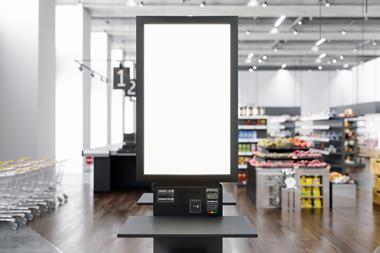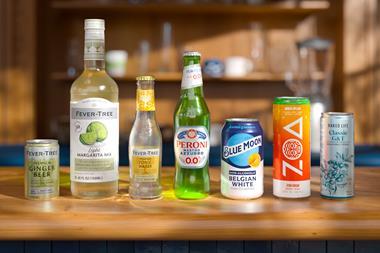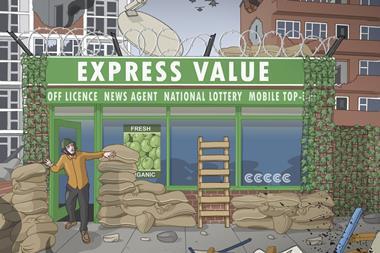Inflation and soaring commodity costs are forcing more producers to try to hedge against currency fluctuations – with mixed results, says Michael Kapoor
Bad harvests, commodity price speculators, burgeoning demand from BRIC countries there are many good reasons why UK shoppers have faced rising food prices of late.
In the past year alone, commodity hikes have pushed up the price of vegetable oils and spreads by more than 20%. Orange and apple juices are set to soar a similar amount this year and further price rises on many grain-sensitive foods such as poultry, eggs and dairy as well as luxuries such as chocolate are also expected.
The blame for this lies squarely with exchange rate fluctuations, according to Defra. Britain grows less than 60% of the food it consumes, making it highly reliant on imports. However, sterling was worth 23% less in 2009 than it was in 2007, pushing the price of imported food up a headache for cash-strapped consumers, but an even bigger one for food producers.
That’s why more of them are now hedging via forward contracts, swaps, options, derivatives, futures contracts, you name it in a bid to offset their exposure to currency fluctuations and minimise their risk. Unfortunately, it’s no easy task in any market, let alone the current one.
Food inflation has hit Britain hard. Prices rose 8% between 2007 and 2010, according to Defra figures twice as fast as the rest of the EU, and 2.7 times faster than prices in France. Much of the upward pressure on prices can be attributed to soaring commodity costs.
If exchange rates were predictable, companies could price these into contracts, so if wheat, say, became more expensive they would charge more for their bread to compensate. But the volatility in the currency markets has made it all but impossible for producers to guess what the exchange rate will be on any given day so they can’t be sure they’re not paying over the odds. And it’s not about to get any easier.
Sterling remains weak because of the UK’s high budget deficit and rising national debt levels. By itself, that would simply make the pound less valuable abroad, but nearly all the world’s major currencies face similar problems.
There have been jitters over the dollar as the US economy struggles and debt levels rise. And the crises in Greece and Ireland threaten confidence in the wider euro area.
With investors getting nervous about the big currencies used to buy food, exchange rates have been all over the place in the short term. Add that to surging and unpredictable global prices for everything from wheat to beef, and contract pricing gets tricky.
The consensus, however, is that the bigger the company, the less of a problem currency swings are: a multinational can juggle its sales and purchasing mix across its many different markets to minimise the hit.
It would be wrong to say they are completely safe, however the volatility in currency markets has proved very difficult to hedge against, even for the big players.
A source at one big British producer admits his frozen food operations have taken an exchange rate hit because its manufacturing facilities are based in the euro area, but much of its sales revenue is in sterling. As sterling lost value against the euro, so the cash received from sales effectively tumbled against the cost of euro production, hitting profits.
Another big food group took a hit when it bought a bread maker that lost money heavily on wheat purchased in dollars.
But those problems pale in comparison to those faced by SMEs businesses typically without the resources or nous to hedge effectively. Chris Redfern, a broker at Monycorp, says exchange rate volatility has led to an “upsurge in interest from SMEs” in hedging currency risk.
It is not difficult to see why: banana supplier SH Pratt lost £6.2m in 2009, for example, which it blamed on exchange rate losses. Better use of hedging subsequently helped it to post a £1.2m profit the following year.
Basically, hedging against currency risks boils down to buying currency (and commodities) in advance. “The important thing is to follow the market and understand its movements,” says Redfern.
The ideal solution is not so much to second-guess the market but to agree purchase and sale terms based on the same exchange rates, meaning that the contract will remain profitable. “In fact, many clients hedge only part of their risk so that they can still profit from favourable exchange rate shifts,” says Redfern.
One director of a medium-sized food importer warns that things are not that simple, however. He has reduced his exposure to exchange rate volatility by hedging against interest rate fluctuations, one of the key exchange rate determinants. But he lost money because banks refused to agree to fund sufficient exposure in other words, he couldn’t get them to advance him the money to buy sufficient forward currency to cover some of his bigger contracts. “They changed their tune when I actually lost money, but things remain very tight in the City,” he says.
The other crucial factor here is the supermarkets. Some demand long-term supply contracts at a fixed price that can be rendered worse than valueless if the exchange rate or commodity prices spiral. Tesco is praised for its flexibility in this respect. It allows its suppliers to review prices periodically to give them flexibility if their costs surge, says one food importer: “They know they had to look after their suppliers here.”
However, others are less accommodating, says the importer, warning that if supermarkets play tough, their suppliers can face huge problems from exchange rate shifts. The extent of these problems varies across the supply chain, but they are widespread.
UK farmers have been hit hard because EU subsidies are calculated in euros, not pounds. They also face exchange rate exposure on imported feed. As a result, British farmers suffered the biggest drop in income of all EU states in 2010, when UK farm income tumbled 8.2%. By contrast, farm income in France surged more than 30%.
Even in dairy, a largely domestic industry, the situation is grave. Milk producers have suffered from the hike in feed costs, while commodities can account for 80% of the cost of some luxury dairy lines like chocolates. Ingredients can be priced in dollars, euros or a host of local currencies, making it hard to escape the exchange rate problem completely.
Ultimately, short-term currency volatility coupled with the longer-term trend of sterling losing value against its key trading currencies from European and America can mean only one thing, say experts: prices must go up.
“Companies say they kept a lid on price rises in the third quarter of 2010,” the FDF said after performing a business confidence survey in December. “However, with most reporting ongoing rises in the costs of commodities and ingredients, 64% expected to put up prices up by the end of the year.”
To what extent such price rises will really be possible in the current depressed economic climate remains to be seen.
Sign in to comment on this article
Not logged in before? Register for FREE guest access today.
You will be able to:
- Read more stories
- Receive daily newsletters
- Comment on stories
Advert



















No comments yet